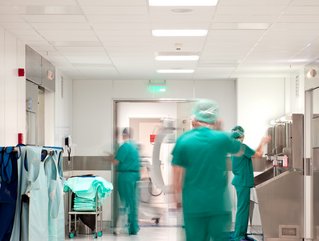Technology is solving bottlenecks in the healthcare system

Chronic respiratory conditions, such as sleep apnoea, COPD and asthma, affect hundreds of millions of people globally and are the third leading cause of death worldwide. Among these, untreated obstructive sleep apnoea (OSA) alone costs the US economy an estimated US$6k per patient per year because of the serious health implications if it’s left untreated. These include heart attacks, diabetes and dementia, as well as an increased risk of road accidents.
Removing bottlenecks from the healthcare sector with new technologies
Respiratory conditions like OSA are difficult to diagnose and manage - 85% of people with OSA in Europe and the US remain undiagnosed, for instance - because traditional methods are complex, cumbersome and require a specialist respiratory clinician to manually interpret the data before a diagnosis can be obtained. This causes huge bottlenecks and delays patients’ access to treatment, which not only increases the risks to their physical health but can also take a mental and emotional toll, affecting their work and relationships.
Fortunately, new technology is emerging to combat bottlenecks across healthcare, with convenient wearable devices that make diagnosis and management easier and quicker for both patients and clinicians. Millions of people with diabetes can now use continuous glucose monitoring to manage their condition, reducing the need for invasive fingerstick checks and giving the patient greater control over their own health. New devices make it easy to monitor your blood pressure at home without needing to find the time to visit a clinic or pharmacy. These innovations aim to reduce discomfort and inconvenience for patients, while cutting costs and streamlining processes for healthcare providers.
Among the devices tackling these problems in respiratory healthcare is Acurable’s AcuPebble device, which is a wearable acoustic sensor. AcuPebble was the first medical device to obtain the CE mark in Europe for the automated diagnosis of obstructive sleep apnoea.
The device consists of a very small sensor which can be attached to the neck with a single-use medical adhesive, while a mobile application explains to the patient how to conduct their sleep study unassisted and upload the data, all from the comfort of their own home. Once the signals have been uploaded, proprietary algorithms analyse them and send an automated diagnostic report to clinicians for review within minutes via a secure web platform. This means the patient doesn’t need to travel to a hospital (as the device can be sent in the post) and saves hours of clinician time which can then be spent on getting the patient the treatment they need.
But aren’t there consumer wearables in the market that already provide sleep apnoea diagnosis? Well, no. Though these devices make a lot of marketing claims, the data is often very misleading, and they have not been properly validated for their implied clinical application - or they have, but with very poor results that are not clearly disclosed to the public. This can end up causing unnecessary stress for patients and also for doctors faced with patients who bring in the unreliable data obtained from these devices. In contrast, the AcuPebble is a regulated medical device, which was clinically validated in a study with excellent results that have since been published in the British Medical Journal Open.
The AcuPebble device has been used by the NHS as an established alternative to traditional testing processes for OSA for the past two years and will be launching in the US soon, following a recent new FDA 510(k) clearance. The newly cleared version of the device includes a complete sleep report and offers a comprehensive set of channels including, amongst others, heart rate and signals, activity, snoring, oxygen saturation, respiratory phases and airflow.
While Acurable’s first product to go to market is for OSA diagnosis, the company has much broader ambitions and is already working on applying the device’s core acoustic sensing IP to other respiratory conditions, among them COPD and asthma. These are conditions that would benefit from long term monitoring and AcuPebble offers a unique opportunity to do this at a significantly lower cost and without a need for intensive human resources.
New technologies are supporting healthcare professionals
Over time the AcuPebble device has the potential to become a “thermometer” of respiratory conditions: a device that everyone has at home to diagnose, monitor or manage a variety of health problems with the same accuracy as the big machines in hospitals. This progression will also relieve the workload associated with interpretation of results by healthcare professionals and will enable healthcare systems to fundamentally improve the management of chronic conditions.
The last few years have been challenging for healthcare, with the global COVID-19 pandemic putting a strain on already stretched resources. But thanks to new technology - which takes some of the pressure off clinicians and gives patients more control over their own health and wellbeing - healthcare providers are becoming increasingly better placed to meet those challenges.
Esther Rodriguez-Villegas, Founder & Co-CEO of Acurable.






